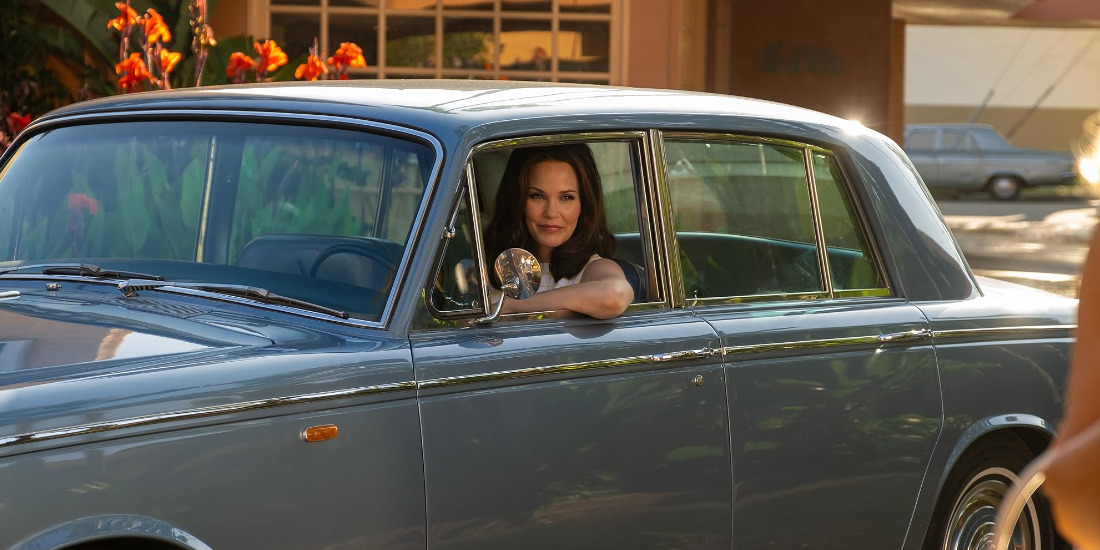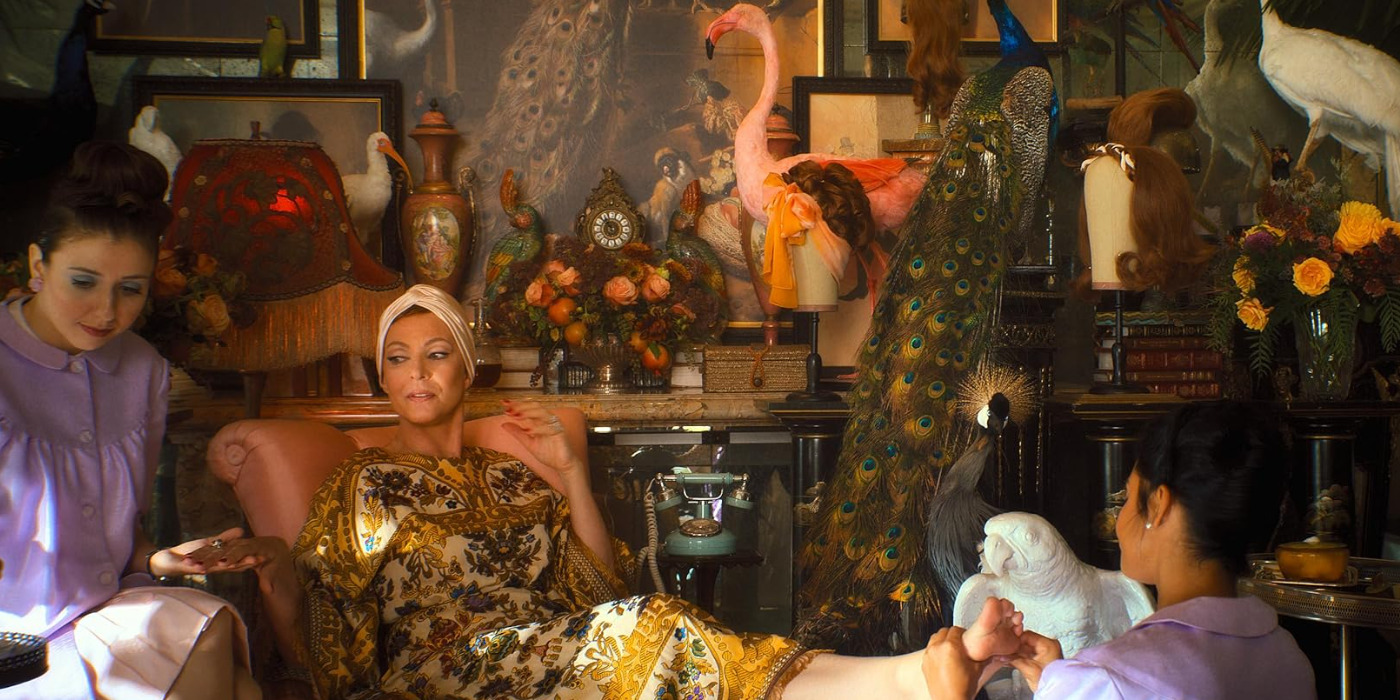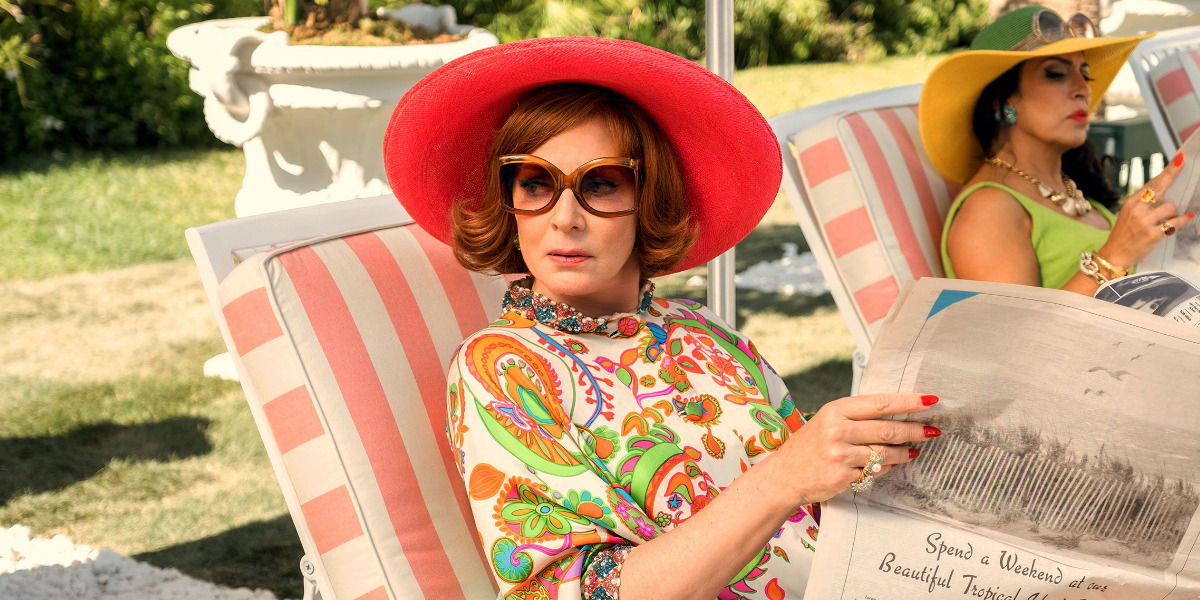‘Palm Royale,’ the show steeped in the late 1960s Palm Beach culture, is all about the art of the social climb. The story features Maxine Simmons, an outsider with daunting aspirations of fitting in among the ladies of high society, best represented through the exclusive titular club Palm Royale. Therefore, Evelyn Rollins, the queen bee and an upholder of the status quo, naturally becomes the antagonist highbrow for Maxine to impress and overcome. Likewise, Dinah Donahue, Evelyn’s close friend and another famous name, occupies a similar spot in the narrative, falling into a frenemy dynamic with Maxine.
Consequently, these women continue to influence the narrative— and the culture of Palm Beach, as evident in their multiple mentions in the local newspaper, Shiny Sheet. As a result, people may wonder about Evelyn and Dinah’s relationship to reality.
Evelyn and Dinah are Fictional Characters Reflective of Palm Royale’s Period Setting
Within the fictitious confines of the show, neither Evelyn Rollins nor Dinah Donahue are inspired by real people and remain fictional pieces of work. ‘Palm Royale’ possesses a literary basis as a loose book-to-TV adaptation of ‘Mr. & Mrs. American Pie,’ a historical fiction novel by Juliet McDaniel. Therefore, most characters in the show retain some familiarity with a bookish counterpart. For instance, Allison Janney’s on-screen Evelyn Rollins sports a notable similarity to McDaniel’s eponymous character. Even so, since the plot-related content of the show drastically deviates from the source material, her cinematic character ends up charting a distinct path of her own.

Consequently, both Evelyn and Dinah become newly crafted fictional characters defined by their status as the popular, wealthy ladies of Palm Beach during 1969. Their catty, backstabbing, and status-chasing tendencies fit well with the drama show’s entertaining depiction of the frivolities within high society. Even though the narrative itself rarely ventures into high-stakes developments, both women are allowed their exaggerated reactions to parties and scandals due to their social dispositions.
In that regard, Evelyn and Dinah’s characters set the tone for the absurd priorities within Palm Beach, feeding into the significance of status, wealth, and influence within the show’s affluent setting. However, instead of stemming from real-life inspiration, the same can be credited entirely to the show’s creator, Abe Sylvia, her room of writers, and the actresses behind the characters. Alternatively, one of the most evident ways in which period-typical inspiration translates to the screen is in the form of women’s fashion, a prominent element within the show, perfected by Costume Designer Alix Friedberg. The bright, vintage aesthetic donned by both women through their clothing and hairstyles— as well as body language— largely contributes to the show’s thematic resonance.

Janney and her co-star Leslie Bibb spoke about the same in an interview with Town & Country. Discussing crucial, shared inspiration in their performances, Janney cited Slim Aarons, the American photographer celebrated for his work, glamorizing the celebrity and socialite culture of the 70s. “It is, like he [Aarons] said [about his work], beautiful people doing beautiful things in beautiful places,” said the actress. “But you look at these photographs— and they’re all perfectly placed, but there’s still some sort of fissure; you know, it’s covering up something strange and dark— and nothing’s that perfect. The Slim Aarons world was like a really nice foray into that time.”
Similarly, Janney and Bibb shared other vintage artistic works, including films such as ‘All About Eve,’ ‘Peyton Place,’ and ‘Valley of the Dolls,’ as various sources of inspiration. In theme with retro pop culture, Bibb also took surface-level inspiration from the dynamic between sisters Jackie Kennedy and Lee Radziwill as a diving point to craft her character’s narrative. Nevertheless, such inspiration only served to inform the subliminal traits of the characters without drawing any direct influence. Therefore, Evelyn and Dinah’s characters seem to follow the show’s philosophy when it comes to real-life, historical authenticity. Even though they lack a tangible basis in reality, their characters hold on to visually realistic portrayals. Thus, ultimately, both remain confined to their world of fictionality.
Read More: Palm Royale: Was Linda Shaw a Real Women’s Activist?


You must be logged in to post a comment.